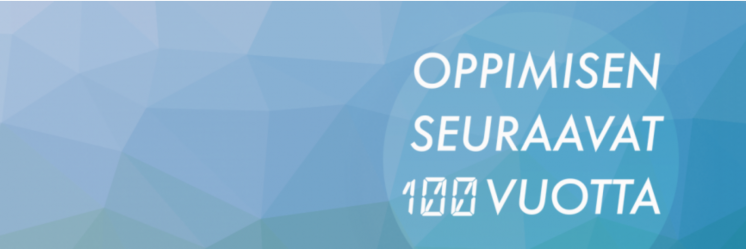New Practices and Increased Digitalization!

Authors: Katriina Korhonen, Petri Myllynen
The new year is well underway and as always, it is filled with hopes, expectations and plans, also some that have to do with teaching. In fact, 2018 will bring a lot to look forward to in curriculum design and the daily work of teachers.
Next autumn, Aalto will implement its first two-year curriculum, which is designed to bring a long-term perspective to curriculum design. The University of Helsinki has a similar system, with a curriculum in force for three academic years at a time.
For Aalto teachers, one natural outcome of this change is the need to plan further ahead, as courses will be designed for two academic years at once. Supplementing the course description, more detailed information on courses for a given academic year can be given in the new course syllabus, which is a type of course brochure integrated into the MyCourses workspace of each course. The timeline of curriculum design is changing in other respects, too, as the detailed teaching timetables are in future going to be published on 1 June rather than 1 August. This means that teachers and students can start preparing for the next academic year before going on their summer breaks, with the MyCourses pages generated and all teaching updated on WebOodi before the summer really gets going. It’s Aalto history in the making.
It is not only individual courses but also the larger framework of curriculum design, i.e. the design of education, teaching and course offerings (academic timetable), that is in transition. We are heading towards a future where information will no longer be fragmented and processes will be planned and implemented beyond the limits of systems and services with less need for manual tweaking and retooling. To get there, we need to see curriculum design as an ecosystem made up of actors and systems. The goal is to update the process descriptions of the actors, introduce the viewpoints of teachers and programmes in the implementations, and direct development towards services that cross system boundaries.
In practice, this could be achieved by tailoring a service process for teachers and programme directors so they can more easily create and update curriculum information. In other words, curriculum details would be elaborated during the curriculum design process and course description data could then serve as a tool (e.g. workload) when designing future curricula. Once that is accomplished, the degree programme structure and the recommended course timing will start to fall into place from early-stage curriculum design to academic timetable planning, all the way to the students’ personal study plans.
To further support the teachers’ everyday work and teaching, we at OPIT have started a project to produce more learning analytics. In addition, we are close to making electronic examinations a reality at Aalto; we hope to be able to organise at least re-exams electronically in the near future. We are also making headway with the introduction of our biggest single project, Sisu.
For more information on these and other OPIT projects, please refer to our experts: https://inside.aalto.fi/display/files/Oppimisen+IT%3An+yhteystiedot
Wishing everyone a great 2018!

